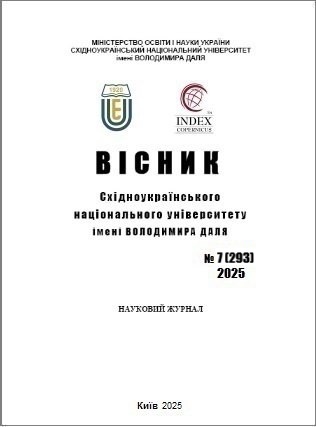Design of the information system of the admission committee of a higher educational institution
DOI:
https://doi.org/10.33216/1998-7927-2025-293-7-12-16Keywords:
information technology, admissions office information system, information system design, DFD, UMLAbstract
The paper discusses the design of information system to automate work with documents of applicants in the admissions office of a higher education institution during the admission campaign. The developed information system is a web application which is focused on employees responsible for receiving physical documents, such as registrars, operators and officials who control the admission process. The main goal of the designed system is to ensure quick and convenient entry of data about applicants at the time of submitting documents. Applicants are added to the system based on an existing database, which allows you to avoid re-entering personal data and minimize possible errors. A key feature of the designed system is the implementation of data mining tools, which will relieve employees of routine tasks of document verification, allowing them to focus on solving truly complex and non-standard situations. To achieve the main goal, a set of tasks was solved. In particular, the shortcomings of the traditional approach to processing documents of applicants in higher education institutions were analyzed. The feasibility of implementing an information and analytical system for centralized storage and automation of application processing is substantiated. Functional models of the designed AS-IS and TO-BE system are presented. The architecture of an improved information system is proposed and separate software modules are developed for importing input data and automatically classifying applicants' cases by the completeness of documents with subsequent integration into a fully functional admission campaign support system. The proposed architecture is based on a relational database model, client-server structure and classification algorithms. The software is developed using the Python programming language, pandas, tkinter, mysql.connector libraries. MySQL Workbench was used for database modeling, and development was carried out in the PyCharm environment. The effectiveness of the approach is demonstrated on test sets, and a comparison is made with the real actions of admissions committees. The system is ready for further integration and scaling.
References
1. Про затвердження Порядку прийому на навчання для здобуття вищої освіти в 2025 році. Офіційний вебпортал парламенту України. URL: https://zakon.rada.gov.ua/laws/show/z0312-25#Text.
2. Основи автоматизованої обробки інформації – принципи побудови інформаційних систем. [Електронний ресурс]. Режим доступу: www. URL: https://studfile.net/preview/10045748/ page:3/ (дата звернення: 20.06.2025)
3. Data Flow Diagram (DFD) – візуалізація потоків даних у системі. [Електронний ресурс]. Режим доступу: www. URL: https://www.sciencedirect.com/topics/computer-science/data-flow-diagram (дата звернення: 20.06.2025)
4. Макоєдова В. Проєктування інформаційної системи приймальної комісії на основі UML-діаграм. Наука і техніка сьогодні. 2023. № 9(23). URL: https://doi.org/10.52058/2786-6025-2023-9(23)-634-642.
5. Unified Modeling Language (UML) – вступ до уніфікованого моделювання програмних систем. [Електронний ресурс]. Режим доступу: www. URL: https://www.geeksforgeeks.org/ unified-modeling-language-uml-introduction/ (дата звернення: 20.06.2025)
6. Реляційна модель даних – базові поняття та принципи побудови баз даних. [Електронний ресурс]. Режим доступу: www. URL: https://www.bestprog.net/uk/2017/09/18/basic-concepts-of-the-relational-data-model_ua/ (дата звернення: 20.06.2025)

